What did Carl Jung say about the Shadow?
There’s a picture opposite me
Of my primitive ancestry
Which stood on rocky shores
And kept the beaches shipwreck-free
Though I respect that a lot
I’d be fired if that were my job
After killing Jason off
And countless screaming Argonauts
Blue bird of friendliness
Like guardian angels it’s
Always near-They Might be Giants
1.1. Jung’s Original Conception of the Shadow
Carl Jung first encountered the concept of the shadow through his own confrontation with the unconscious. In his personal explorations and in his work with patients, Jung recognized the powerful influence of hidden psychic contents that were not integrated into the conscious personality. He used the term “shadow” to describe this dark, unknown side of the psyche.
In Jung’s view, the shadow was not merely a collection of negative qualities, but a complex and integral part of the whole self. As he wrote in “Psychology and Religion” (1938): “The shadow is a moral problem that challenges the whole ego-personality, for no one can become conscious of the shadow without considerable moral effort. To become conscious of it involves recognizing the dark aspects of the personality as present and real.”
1.2. The Shadow as Universal and Natural
Jung emphasized that the shadow is a universal feature of the human psyche. Everyone carries a shadow, and the less it is embodied in the individual’s conscious life, the blacker and denser it is. The shadow is instinctive and irrational, but it is not necessarily evil. It only becomes dangerous when it is ignored or misunderstood.
In fact, Jung saw the shadow as a natural part of the psyche’s self-regulating system. Just as the body has homeostatic mechanisms to maintain its equilibrium, the psyche has self-balancing tendencies that manifest through the compensatory dynamics of the shadow. Acknowledging and integrating the shadow, therefore, is crucial for maintaining psychic wholeness and preventing one-sidedness.
1.3. The Golden Shadow
While much attention is given to the dark aspects of the shadow, Jung also recognized the importance of what he called the “golden shadow”. This refers to the positive qualities and potentials that are hidden or undeveloped in the personality. As Robert Johnson wrote in “Owning Your Own Shadow” (1991), “The gold is related to our higher calling, our true vocation in life, our reason for being. The gold is the self we have not yet become, the Alchemical gold, gold not found within but hard-won, worked for, sweated and bled for.”
Integrating the golden shadow involves recognizing and claiming the gifts and talents that have been neglected or devalued. This process can be as challenging as facing the dark shadow, as it often requires overcoming feelings of unworthiness, fear, or self-doubt. But by embracing the golden shadow, we can access new sources of creativity, joy, and fulfillment.
2. The Shadow in Relationships
2.1. Shadow Projection and Attraction
The shadow plays a powerful role in interpersonal relationships, often through the mechanism of projection. We tend to project our own unacknowledged qualities onto others, seeing in them the very traits that we have disowned in ourselves. This can lead to intense experiences of attraction or aversion.
As Jung wrote in “Aion” (1951), “The shadow personifies everything that the subject refuses to acknowledge about himself.” When we fall in love, we may be unconsciously drawn to the person who embodies our golden shadow, the positive qualities that we have not yet developed in ourselves. Conversely, when we feel intense dislike or even hatred toward someone, they may be carrying our dark shadow, mirroring the negative traits that we cannot accept in ourselves.
2.2. Shadow Dance in Partnerships
In intimate relationships, the shadow dynamics between partners can create a complex dance of projection and introjection. As Sabina Spielrein, one of Jung’s early collaborators, observed, the “particularum” of one person can be attracted to the “particularum” of another, like a lock and key fitting together. These unconscious shadow bonds can generate intense passion but also conflict and misunderstanding.
John Welwood, a psychotherapist who integrates Eastern and Western approaches, describes how couples often get stuck in shadow projections, leading to a cycle of blame and defensiveness. Each partner sees the other as the cause of their problems, failing to recognize their own contribution to the dynamic. Welwood suggests that the key to transforming these patterns is to take back projections and own the disowned parts of oneself.
2.3. Healing through Shadow Work in Relationships
While shadow projection can create challenges in relationships, it also provides opportunities for deep healing and growth. By learning to recognize and withdraw projections, partners can move towards greater self-awareness and mutual understanding.
Arielle Schwartz, a therapist specializing in complex PTSD, emphasizes the importance of creating a safe, non-judgmental space for couples to explore their shadow material. This may involve techniques such as Harville Hendrix‘s Imago Dialogue, which allows partners to mirror and validate each other’s experiences without blame or criticism.
Through this process of compassionate inquiry, couples can begin to integrate their shadow selves and develop greater empathy for each other’s struggles. As Thomas Moore writes in “Soul Mates” (1994), “A soulful relationship is one in which we are able to share our entire selves with each other, including those parts of ourselves we normally suppress out of contempt or fear.” By embracing the shadow, relationships can become a crucible for profound personal and interpersonal transformation.
3. The Shadow in Culture and Society
3.1. The Collective Shadow
Just as individuals have a personal shadow, groups and societies also have a “collective shadow” – the disowned and unacknowledged aspects of a culture’s identity. This collective shadow is formed by the shared historical traumas, cultural blind spots, and systemic oppressions that shape a society’s unconscious.
Erich Neumann, in his work “Depth Psychology and a New Ethic” (1949), explored how the collective shadow can manifest in mass movements, wars, and atrocities. When a culture fails to integrate its shadow, it is prone to acting out destructively, often through the scapegoating and persecution of marginalized groups.
3.2. Shadow Projection in Politics
The dynamics of the collective shadow are particularly evident in the realm of politics. Political ideologies and movements often gain power by tapping into a society’s unacknowledged fears, prejudices, and resentments. Leaders may embody the shadow qualities that a culture has repressed, acting as a lightning rod for the collective psyche.
We see this in the rise of authoritarian and fascist regimes, which exploit the shadow projections of the masses. As Jung wrote in “The Fight with the Shadow” (1946), “The psychological rule says that when an inner situation is not made conscious, it happens outside, as fate. That is to say, when the individual remains undivided and does not become conscious of his inner opposite, the world must perforce act out the conflict and be torn into opposing halves.”
In contemporary politics, the shadow often manifests through the demonization of political opponents, the scapegoating of immigrants and minorities, and the denial of collective responsibility for social ills. Andrew Samuels, a Jungian analyst and political commentator, has written extensively on the role of the shadow in political life. He argues that a mature political discourse requires a willingness to acknowledge the shadow dimensions of one’s own beliefs and to engage in dialogue across difference.
3.3. Confronting the Cultural Shadow
Confronting the collective shadow is a daunting but necessary task for creating a more just and compassionate society. It requires an honest reckoning with the historical traumas and injustices that have shaped a culture’s identity, as well as a willingness to take responsibility for repairing the damage.
This process of cultural shadow work can take many forms, from truth and reconciliation commissions to public apologies and reparations. It also involves a commitment to ongoing self-reflection and dialogue, both within and between communities.
Organizations like Coming to the Table, which brings together descendants of enslaved people and slave owners for healing conversations, exemplify this work of collective shadow integration. By creating spaces for painful truths to be spoken and held with compassion, such initiatives can help to transform the unmetabolized grief and trauma of the past.
4. The Shadow in Spirituality and Religion
4.1. The Shadow Side of Spiritual Traditions
The shadow is not only a psychological concept but also a spiritual one. Many religious traditions have practices for acknowledging and transforming the darker aspects of human nature, from the Christian idea of original sin to the Buddhist understanding of the kleshas, or afflictive emotions.
However, spiritual traditions can also have a shadow side, when they repress or deny certain aspects of the human experience. This can lead to spiritual bypassing, where difficult emotions and shadow qualities are avoided in the name of transcendence or enlightenment.
John Welwood, who has written extensively on the intersection of psychology and spirituality, describes spiritual bypassing as “using spiritual ideas and practices to sidestep personal, emotional ‘unfinished business,’ to shore up a shaky sense of self, or to belittle basic needs, feelings, and developmental tasks.” When spirituality is used to escape from rather than engage with the shadow, it can lead to a kind of false transcendence that ultimately undermines genuine growth and awakening.
4.2. Integrating the Shadow on the Spiritual Path
Authentic spirituality, in contrast, requires a willingness to face and integrate the shadow. This process of shadow work is central to many mystical traditions, from the Christian dark night of the soul to the Sufi path of blame. By descending into the depths of the psyche and confronting the inner demons, the spiritual seeker can ultimately ascend to a higher level of consciousness.
Thomas Moore, in his book “Dark Nights of the Soul” (2004), explores how experiences of darkness and despair can be gateways to spiritual transformation. He writes, “The dark night serves the spirit by forcing us to go deeper than the ego, to seek the soul and find what is truly sustaining in life.” By embracing the shadow as a teacher and guide, we can access a more profound and embodied spirituality.
This integration of the shadow is also crucial for preventing the abuse of spiritual authority. When religious leaders and institutions deny their own shadow impulses, they are more likely to act out in harmful ways, from sexual misconduct to financial exploitation. Mariana Caplan, in her book “Eyes Wide Open” (2009), emphasizes the importance of discernment and self-awareness on the spiritual path, to avoid falling prey to the shadow projections of charismatic leaders.
4.3. The Shadow and the Sacred
Ultimately, the encounter with the shadow can be understood as a sacred rite of passage, a necessary descent into the underworld of the psyche in order to retrieve the hidden gold. As Joseph Henderson suggests in his book “Thresholds of Initiation” (1967), the shadow confrontation is a key element of the hero’s journey, the archetypal pattern of death and rebirth that underlies many spiritual traditions.
By facing the shadow, we are initiated into a deeper mystery, the sacred wholeness that transcends good and evil. We discover that the divine includes both light and darkness, that God is not only in the heavens but also in the depths. As Jung wrote, “One does not become enlightened by imagining figures of light, but by making the darkness conscious.” The integration of the shadow, therefore, is not a departure from the spiritual path, but its very essence.
5. The Future of Shadow Work
5.1. Beyond Jungian Psychology
While Jung’s concept of the shadow has been enormously influential, it is important to recognize that our understanding of the psyche has continued to evolve since his time. Contemporary researchers and clinicians are expanding on Jung’s original insights, integrating new findings from neuroscience, attachment theory, trauma studies, and other fields.
Some have critiqued the Jungian model of the shadow for being too focused on individual intrapsychic dynamics, at the expense of relational and systemic factors. Others have pointed out the ways in which Jung’s own cultural and historical context shaped his views, including his problematic assumptions about gender and race.
As Andrew Samuels has argued, the future of shadow work requires a more politically engaged and socially conscious approach, one that recognizes the interconnectedness of personal and collective shadows. This means not only working with individuals to integrate their disowned selves, but also collaborating to transform the oppressive systems and power structures that shape the collective unconscious.
5.2. Somatic and Embodied Approaches
Another key development in contemporary shadow work is the emphasis on somatic and embodied approaches. Drawing on the pioneering work of Wilhelm Reich, many therapists today recognize that the shadow is not just a psychological concept but a visceral reality, rooted in the body and nervous system.
Techniques like Peter Levine‘s Somatic Experiencing and Pat Ogden‘s Sensorimotor Psychotherapy work directly with the body to release stuck traumatic energies and promote self-regulation. By attending to sensations, impulses, and physical postures, these approaches help clients to access and integrate shadow material that may be preverbal or unconscious.
Similarly, Richard Schwartz‘s Internal Family Systems (IFS) model, while not explicitly Jungian, shares many conceptual similarities with Jung’s theory of complexes. IFS views the psyche as composed of different sub-personalities or parts, each with its own unique qualities and agendas. By dialoguing with these parts and understanding their protective functions, clients can unburden the shame and pain that keep the shadow locked in place.
5.3. Shadow Work and Neuroscience
The integration of shadow work with somatic approaches is supported by new developments in neuroscience. Research on the triune brain and polyvagal theory, for example, sheds light on the instinctual and emotional underpinnings of shadow responses.
As Jaak Panksepp has shown, the human brain contains ancient emotional circuits that can generate rapid, unconscious reactions of fear, anger, panic, and shame. When these circuits are triggered, they can hijack higher cortical functions and lead to irrational or destructive behavior – the classic hallmarks of shadow possession.
Techniques like QEEG brain mapping provide empirical validation for these subcortical shadow dynamics. By measuring brainwave patterns and neural activity in real time, QEEG allows clinicians to pinpoint the specific brain regions and networks involved in shadow activation. This information can then guide targeted interventions, such as neurofeedback training, to promote self-regulation and integration.
As our scientific understanding of the
embodied brain continues to advance, it is likely that shadow work will become increasingly grounded in empirical research. This integration of depth psychology with neuroscience has the potential to make shadow work more precise, effective, and accessible to a wider range of people.
5.4. A Planetary Shadow Work
Ultimately, the future of shadow work hinges on our ability to apply its principles not only to individuals and groups, but also to the larger systems and structures that shape our world. In an era of global crises – from climate change to wealth inequality to racial injustice – the need for collective shadow work has never been more urgent.
This planetary shadow work requires us to confront not only our personal demons, but also the cultural, historical, and ecological shadows that haunt our species as a whole. It means reckoning with the legacies of colonialism, slavery, genocide, and ecocide that have shaped the modern world, and taking responsibility for healing the deep wounds of intergenerational trauma.
It also means recognizing the ways in which our economic and political systems are built on shadow projections and scapegoating, from the demonization of the poor and marginalized to the exploitation of the natural world. By bringing these shadow dynamics into conscious awareness, we can begin to imagine and create alternative structures based on principles of interdependence, regeneration, and collective care.
As David Tacey suggests in his book “The Darkening Spirit” (2013), this planetary shadow work is not a luxury but a necessity, if we are to navigate the challenges of the 21st century with wisdom and resilience. It requires a fundamental shift in our worldview, from one of separation and domination to one of interconnectedness and mutual flourishing.
6. Implications and the Future
The Jungian concept of the shadow, while nearly a century old, remains a vital and relevant tool for understanding the hidden dimensions of the human psyche. As we have seen, the shadow operates on multiple levels – personal, relational, cultural, and spiritual – shaping our experiences and behaviors in profound and often unconscious ways.
By engaging in the lifelong process of shadow work, we can begin to reclaim the lost and neglected parts of ourselves, and to heal the wounds of trauma and oppression. This work is not easy, but it is essential for our individual and collective wellbeing, and for the creation of a more just and sustainable world.
As Jung himself recognized, the task of integrating the shadow is not a solitary pursuit, but a collaborative effort that requires the participation of all. In his famous BBC interview in 1959, Jung stated:
“We need more understanding of human nature, because the only real danger that exists is man himself. He is the great danger, and we are pitifully unaware of it. We know nothing of man, far too little. His psyche should be studied, because we are the origin of all coming evil.”
Jung’s words ring even truer today, as we face the mounting crises of the Anthropocene era. The shadow of humanity looms larger than ever, threatening to overwhelm us with its unacknowledged destructiveness. And yet, the solution lies not in denying or repressing the shadow, but in facing it with courage and compassion, and harnessing its hidden gold for the greater good.
This is the great work of our time – to bring the shadow into the light of consciousness, to heal the split between our inner and outer worlds, and to forge a new relationship with ourselves, each other, and the living Earth. It is a daunting task, but also a sacred one, inviting us to become whole again, to remember our deep interconnectedness, and to step into our full potential as agents of planetary transformation.
As we embark on this journey of shadow work, we can draw inspiration and guidance from the many pioneers who have gone before us, from Jung and his contemporaries to the cutting-edge practitioners and visionaries of today. But ultimately, the path is ours to forge, step by step, breath by breath, in the crucible of our own lives and relationships.
May we walk this path with humility, discernment, and an open heart, trusting in the intelligence of the psyche to guide us through the shadows to the light. And may our efforts be dedicated to the healing and awakening of all beings, for the benefit of generations to come.
In the end, perhaps the shadow is not a problem to be solved, but a mystery to be embraced – the mystery of our own depths, the mystery of our shared humanity, the mystery of the cosmos itself. By apprenticing ourselves to this mystery, we may discover that the shadow is not our enemy, but our teacher, our ally, and our hidden treasure. And in that discovery, we may find the key to our own liberation, and to the future of life on Earth.
As Jung himself wrote in “The Red Book“:
“There is no light without shadow and no psychic wholeness without imperfection. To round itself out, life calls not for perfection but for completeness; and for this the ‘thorn in the flesh’ is needed, the suffering of defects without which there is no progress and no ascent.”
So let us embrace the thorn, the shadow, the whole of who we are. Let us have the courage to face our darkness, and the compassion to hold it with love. Let us become the alchemists of our own souls, transforming the lead of our pain into the gold of our true nature. And let us do this work not only for ourselves, but for the sake of a world that needs our wholeness now more than ever.
In the words of the poet Rainer Maria Rilke:
“Let everything happen to you: beauty and terror. Just keep going. No feeling is final. Don’t let yourself lose me.
Nearby is the country they call life. You will know it by its seriousness.
Give me your hand.”
May we give each other our hands, and our hearts, as we journey together into the mystery of the shadow, and the light that shines beyond. May we trust in the unfolding of our own unique path, and in the greater wisdom that guides us all. And may we never lose sight of the beauty and the terror, the joy and the sorrow, the darkness and the dawn, that make up the wondrous dance of life.

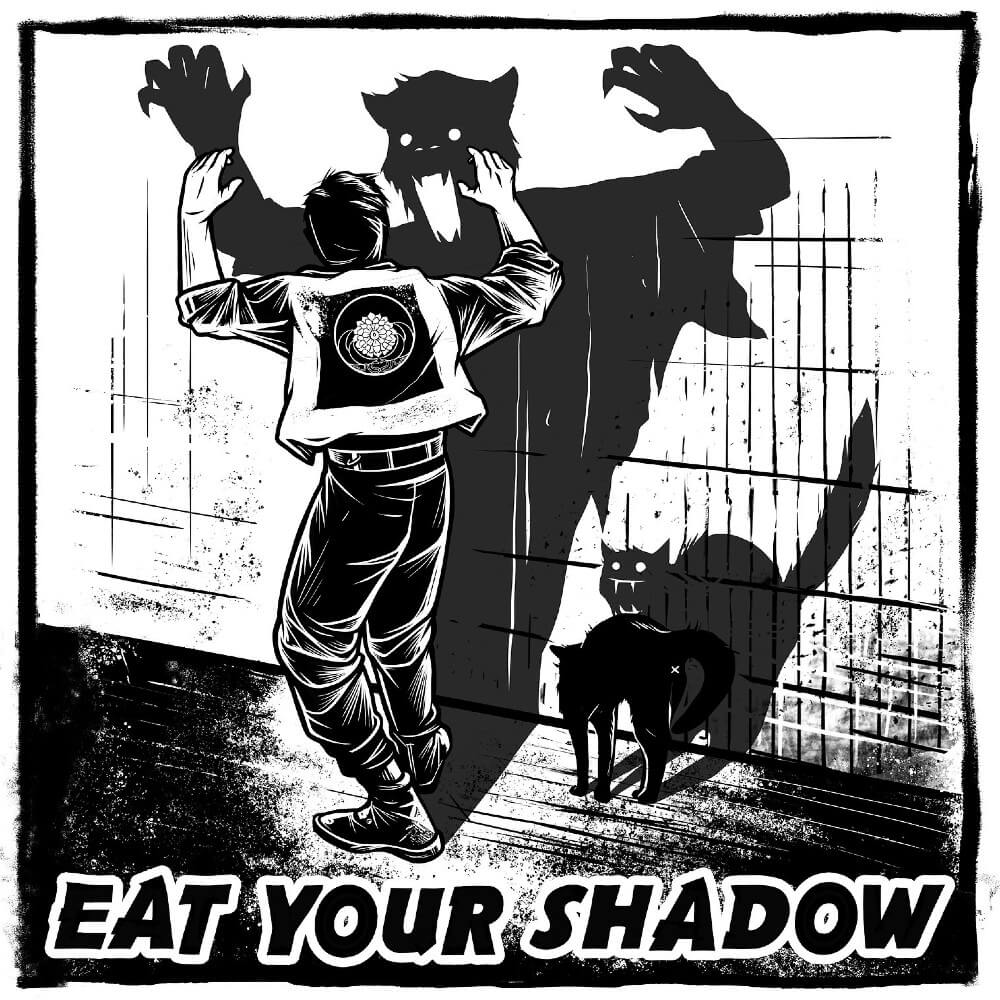











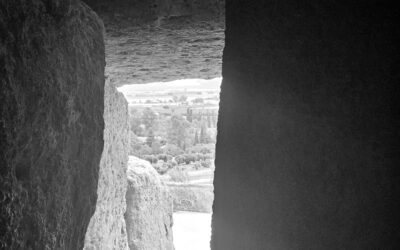




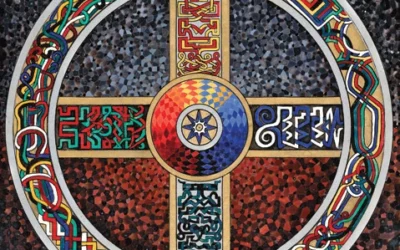

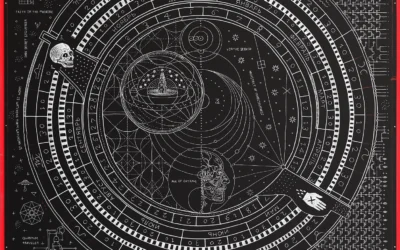
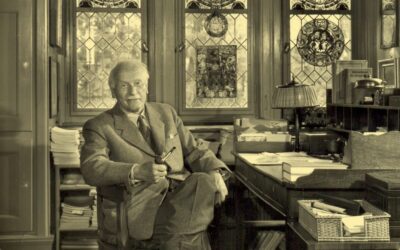
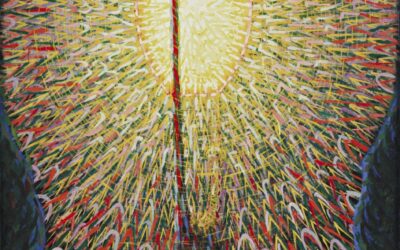


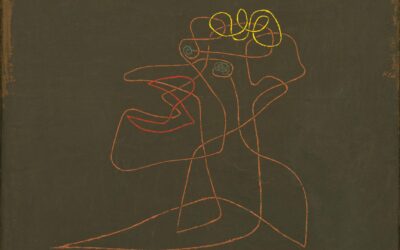
0 Comments